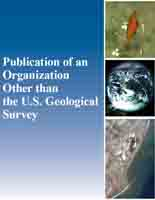Oxidation of pyrite in an anoxic atmosphere
Links
- More information: Publisher Index Page (via DOI)
- Download citation as: RIS | Dublin Core
Abstract
Pyrite (FeS2) inclusions in coal, when heated in an oxygen deficient atmosphere (approximately 1% oxygen), become coated with magnetic Fe3O4 due to oxidation. Most of the FeS2 can thus be removed from the coal by magnetic separation to reduce the sulphur concentration. The oxidation products have been studied in greater detail by measuring the SO2 and O2 in the effluent gas during the heating process and by performing further magnetic measurements. At 582 K, the pyrite surface was oxidized to FeSO4. Significant oxidation of FeSO4 and FeS2 to Fe3O4 was observed starting at 677 K. At about 681 K, the Fe3O4 is further oxidized to α-Fe2O3. At 681 K, under isothermal conditions, the oxidation is impeded by the α-Fe2O3 formed on the surfaces of the grains. If the temperature is rapidly increased, the oxygen penetrates the α-Fe2O3 veneer to the FeS2 core of the pyrite grains and oxidizes essentially the whole pyrite mass to Fe3O4 before α-Fe2O3 can be formed.
| Publication type | Article |
|---|---|
| Publication Subtype | Journal Article |
| Title | Oxidation of pyrite in an anoxic atmosphere |
| Series title | Fuel |
| DOI | 10.1016/0016-2361(87)90232-8 |
| Volume | 66 |
| Issue | 2 |
| Year Published | 1987 |
| Language | English |
| Publisher | Elsevier |
| Description | 7 p. |
| First page | 147 |
| Last page | 153 |


